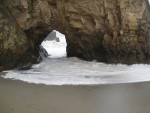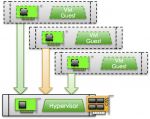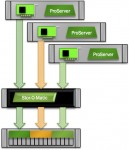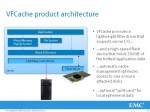Waves of innovation and waves of companies, crash on the storage market, but the same incumbent leaders and product lines survive for decades. Are things changing? It’s hard to see sometimes, but real progress has been made.
caching
VMware-Integrated Caching? Not So Fast!
Integrating solid state storage as a VMware cache isn’t a trivial task. In fact, it’s become the core challenge for some of the best minds in storage, and few real answers have yet emerged. This will be a primary area of focus for me and others who watch and comment on virtualization and enterprise storage!
The I/O Blender Part 1: Ye Olde Storage I/O Path
This old-fashioned, predictable storage I/O path was deterministic and decipherable: The server, the switch, and the array all had enough information to do their jobs effectively and efficiently.
Storage Arrays Do A Few Things Very Well
Storage arrays are big, expensive, and difficult to manage. Plus, concentrating storage in a single device puts everything at risk if there is an outage. So why buy a storage array at all? Arrays do a few things very well, and this often makes up for the difference, on balance.
EMC VFCache (aka “Project Lightning”) Is One Small Step, But an Important One
EMC VFCache (née Project Lightning) is a fairly simple offering: A server-based PCIe flash card that acts as a read cache with no integration with storage arrays or hypervisors. But EMC’s entrance into the host-based flash storage market is a powerful demonstration of the wave of disruption caused by flash-based storage and high-performance computing.




